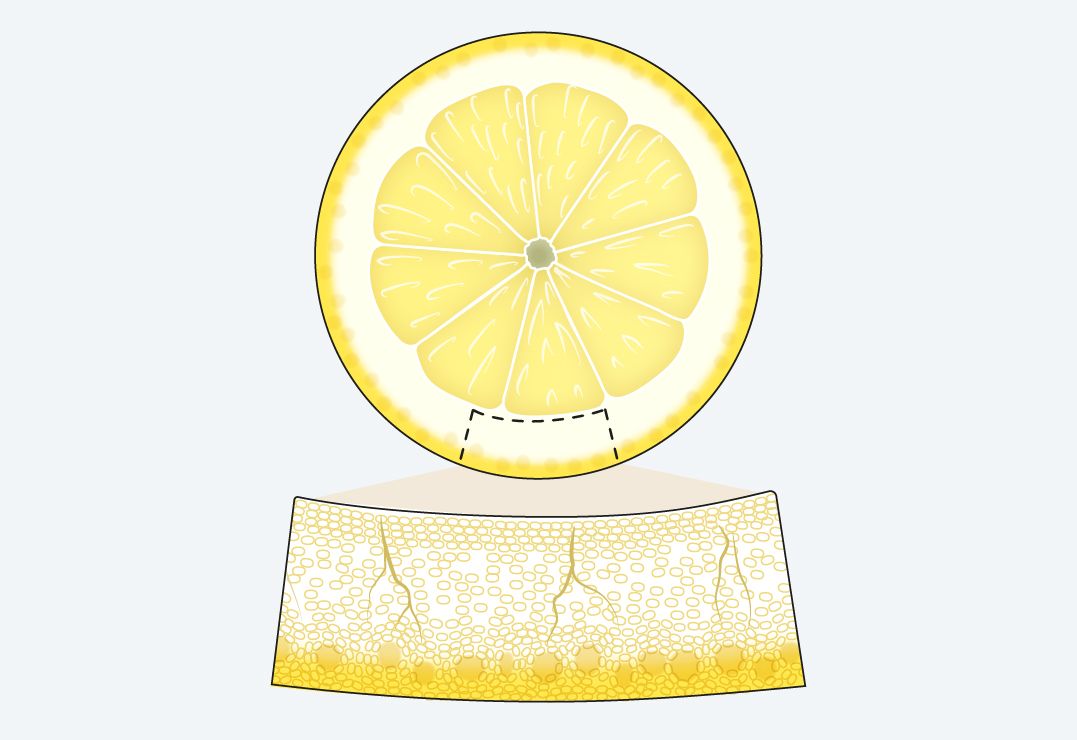News & Press
Lemon Peel has Shock-absorbing Properties
Researchers from livMatS show that the tissue of the lemon peel dissipates the impact energy similarly well as that of the pomelo peel

The tissue structure of the lemon peel could serve as a model for thinner shock-absorbing safety components. Graphic: Michal Rössler/livMatS
The peel of the pomelo (Citrus maxima) is known for its particularly shock-absorbing properties. It allows the citrus fruit to withstand falls of up to 10 meters without damage. This is why the tissue structure of the pomelo peel has already served as a model for highly shock-absorbent metal foams or composite materials for the inner padding of safety helmets.
Maximilian Jentzsch and Prof. Dr. Thomas Speck from the Plant Biomechanics Group and the livMatS Cluster of Excellence, together with Dr. Marc Thiele from the Plant Biomechanics Group at the University of Freiburg, have analyzed the impact behavior of lemons (Citrus X limon) and compared the structure of their peel with that of pomelo peels. The team shows that the much thinner lemon peel absorbs the energy generated during impact similarly well as the pomelo peel, protecting the fruit from damage. The tissue structure of the lemon peel could thus serve as a model for thinner shock-absorbing safety components, for example for transport systems, protective helmets or in packaging technology, which – comparable to the thin lemon peel – combine shock-absorbing properties with low material consumption. The researchers have published their findings in the scientific journal Plants.
The researchers investigated the energy dissipation and the transmitted force in drop-weight tests, in which weights were dropped onto the peel from different heights with corresponding, different impact forces. It was found that the lemon peel also has shock-absorbing properties, although its tissue structure is somewhat different from that of the pomelo peel. The pomelo peel consists of a thick, foam-like tissue with gradually increasing density. The tissue of the much thinner lemon peel, which is also foam-like, is similar in structure, but has a higher density and the transitions between the individual tissue structures are smoother graded than in the pomelo.
Originalpublication:
Jentzsch, M., Becker, S., Thielen, M., & Speck, T. (2022). Functional Anatomy, Impact Behavior and Energy Dissipation of the Peel of Citrus × limon: A Comparison of Citrus × limon and Citrus maxima. Plants, 11 (7): 991. doi: 10.3390/plants11070991 [Special Issue "Functional Plant Anatomy – Structure, Function and Environment"]
